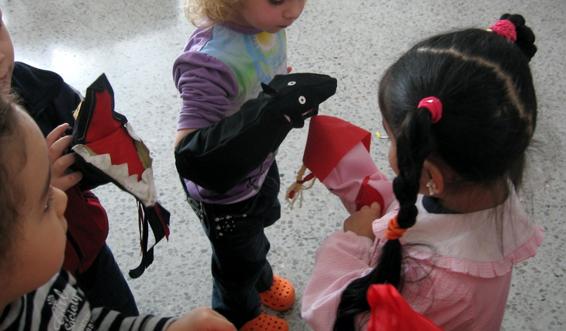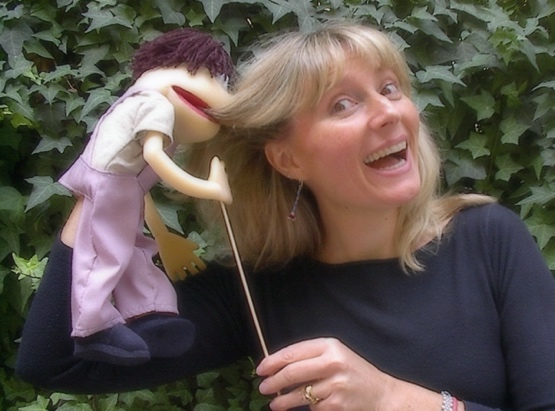
The Puppet As An Educational Value Tool

The puppet as an educationaltool
Early childhood education and care (ECEC) services for children between 0 and 7 years
dr. Paula G. Eleta
Translated by Nevia Ferrara
First edition, April 2019
Updated reissue, August 2020”

Table of Contents
Introduction
The importance of "opening up" to the context
Build a broad-minded school
The puppet with his language does not exclude but integrates ...
What do we mean by "puppet"?
Propose and develop an accomplished language with the puppet
The strength of the puppet
But the puppet does not work miracles...
The puppet as a symbolic language
Polyglot and multicultural puppet
Conceiving flexible educational spaces
An opportunity to listen and to get to know the students better
Families and puppets
What images do we have of a "child" and a "parent"?
Conclusions
Building puppet characters with children and parents
Reference bibliography
LINKS
Short presentation of Paula G. Eleta
The puppet as an educational tool1
Early childhood education and care (ECEC) services for children between 0 and 7 years
dr. Paula G. Eleta
Introduction
In this short paper Paula Eleta explores the theme of the value of the puppet in the pedagogical field, mainly in early childhood (0-7 years), as an effective tool to improve the quality of the educational service through play. Under the direction of the educator2, the puppet can become an excellent "assistant" to build new educational contexts, able to offer all those who live in the Early childhood education and care (ECEC) services for children between 0 and 7 years, different accesses to a common and shared space. The puppet can help to find a more inclusive "school", giving voice and listening to the past, experiences, knowledge and skills of the various actors involved: children (first of all), families, educators, the pedagogical coordinators and other subjects of their own territory.

"The puppet as an educational tool value" is a written text in an accessible and immediate form. In addition, the topics covered were developed on the basis of the author's long experience in the field.
The content is therefore full of concrete and enlightening examples and, among the many proposed activities to be carried out, we point out an easy and quick technique to build puppet-characters: an activity that can be performed, at the various educational services, both together with families and children (with the support of adults).
The importance of "opening up" to the context
"The mind is like a parachute, it only works if it opens up". This phrase attributed to Albert Einstein opens our short volume, as open-mindedness represents a fundamental premise for understanding why and how to bring the language of puppets to Early childhood education and care (ECEC) services for children between 0 and 7 years.
To enter into the merits of this question, we must first of all talk about the "context", in fact it is very important to know how to place our interventions in the social, territorial and cultural contexts where they take place.
Understanding the context in which we operate on a daily basis helps us to go beyond contingent problems, to enrich the pedagogical culture of the Service and above all to develop a design thought capable of reading the complexity and diversity of our society, our world, our educational service. and our users. In essence, this allows us to put the person at the center of the pedagogical interest and, consequently, to be able to respond to the emerging needs of our children and their families.
A few decades ago, the French pedagogue Bertrand Schwartz (Cfr. 1997: 209), pointed out the "detachment" of the education and training system from learners, the world of work, life, environment, cultural activities and also about its territory.
In the last twenty years, the Early childhood education and care (ECEC) services for children between 0 and 7 years have focused their efforts fundamentally on the child and not on what surrounds him: so families, diversity, the territory have remained out of thought, planning and pedagogical programming, depriving educators of precious work tools and "narrowing" their gaze, which instead must be open to looking at a world in evolution and deep change.
In my opinion, knowing how to enhance the "context" in our educational programs represents, however, an important opportunity also to sensitize children to interculturality and the model of encounter and, consequently, represents an opportunity to contribute to the development of significant skills that concern, all around, the present and the future of each child.
Build a broad-minded school
The possibility of building a broad-minded school is, however, neither obvious nor simple. Currently the School and the operators of Early childhood education and care (ECEC) services for children between 0 and 7 years must work in increasingly differentiated and complex realities, facing with a real challenge that is not only accepting and grasping the differences present within the Educational Services, but creating, in diversity, a meaningful learning environment for all (see Eleta, in collaboration with Iaccarino, 2017).
Today the Early childhood education and care (ECEC) services for children between 0 and 7 years are called upon to welcome the intrinsic diversity in each individual and, their operators should be prepared to effectively understand the reality of our classrooms: children with different psycho-physical health conditions, of various geographical and ethnic origins, with different eating habits ... Let's also consider languages ... today the Early childhood education and care (ECEC) services for children between 0 and 7 years count a significant presence of children whose mother tongue is different from Italian and therefore they acquire Italian as L2.
Early childhood education and care (ECEC) services for children between 0 and 7 years for early childhood (0-7 years) are also requested to accompany families in this new "parenting" adventure. But what do we mean today by "family", when it embodies so many "models" and takes on a very complex character?
The operators of the Early childhood education and care (ECEC) services for children between 0 and 7 years (and not only) must interact daily with very different families, therefore, with different needs and requirements. In fact, we find nuclear, extended, recomposed families, homosexual couples, single-parent families, with adopted children, with foster children, with divorced parents, adolescent and over 40-year-old mothers.

In order to offer open and inclusive educational places, you must be able to respond to this complexity by activating specific paths as well as adequate operational and relational methods that know how to welcome, understand, communicate, enhance and support the diversities (See Eleta, in collaboration with Iaccarino, 2017).
Therefore, it is necessary to develop new playful-educational and communicative-relational skills to understand and recognize a plurality of knowledge in children and their families, to co-build a common heritage that is enriched, among other things, by experiences and background, the knowledge and skills of the various players.
Without an "open" mind (returning to the opening sentence) we couldn’t create, in diversity, a Service meant for all users.
The puppet with his language does not exclude but integrates ...
Based on our long experience, we are convinced that the puppet (due to its characteristics) can become a tool of high educational value because it is part of the child's natural play environment and meets his needs, allowing the educator to create a stimulating and enriching context and to favor themes connected to the interests of the learners, their family histories, and also to the educational goals.
In essence, proposing puppets as a valuable tool in the educational field means knowing how to:
- offer an alternative channel of communication and free expression, creating the conditions to allow children and adults to freely experience this language so that, each in their own way, can discover, structure or integrate different knowledge, skills and aspects of their own personality and history (Cfr. Dolci and Eleta, 2017);
- promote alternative accesses to knowledge, experience, participation and sharing;
- create an opportunity for listening and acceptance for all;
- generate motivating, rewarding and inclusive educational contexts.

What do we mean by "puppet"?
"The puppet is an instrument of animation theater, that particular theatrical art which, in fact, uses puppets, marionettes, stuffed animals and shadows as the protagonists of the show as signs of a strongly visual and sensorial language... In the animated theater, in addition to puppets, we can therefore understand marionettes, Sicilian puppets but also bare hands.
Some talented puppeteers manipulate common objects on the stage such as shoes, kitchen utensils, or more. Also, in this case they are puppets because they acquire their theatrical function." (See Dolci and Minoia: 63-84, 2009; See Dolci and Eleta, 2017)
In the educational field, the choice of one technique rather than another must be evaluated taking into consideration some fundamental variables such as familiarity with the language and the tool to be animated, the goal to be achieved, the age of the group, the available space, the most suitable stimuli for that group of children, etc.
However, due to its simplicity and its expressive immediacy, the technique that has become more widespread in education is undoubtedly that of the glove puppet inside which the animator sticks his hand. "(Cfr. Dolci and Eleta, 2017)

Конец ознакомительного фрагмента.
Текст предоставлен ООО «ЛитРес».
Прочитайте эту книгу целиком, купив полную легальную версию на ЛитРес.
Безопасно оплатить книгу можно банковской картой Visa, MasterCard, Maestro, со счета мобильного телефона, с платежного терминала, в салоне МТС или Связной, через PayPal, WebMoney, Яндекс.Деньги, QIWI Кошелек, бонусными картами или другим удобным Вам способом.
Вы ознакомились с фрагментом книги.
Для бесплатного чтения открыта только часть текста.
Приобретайте полный текст книги у нашего партнера:
Всего 10 форматов